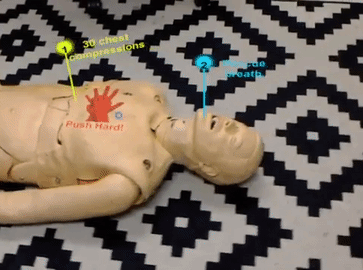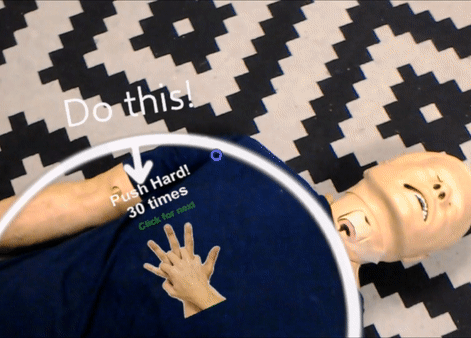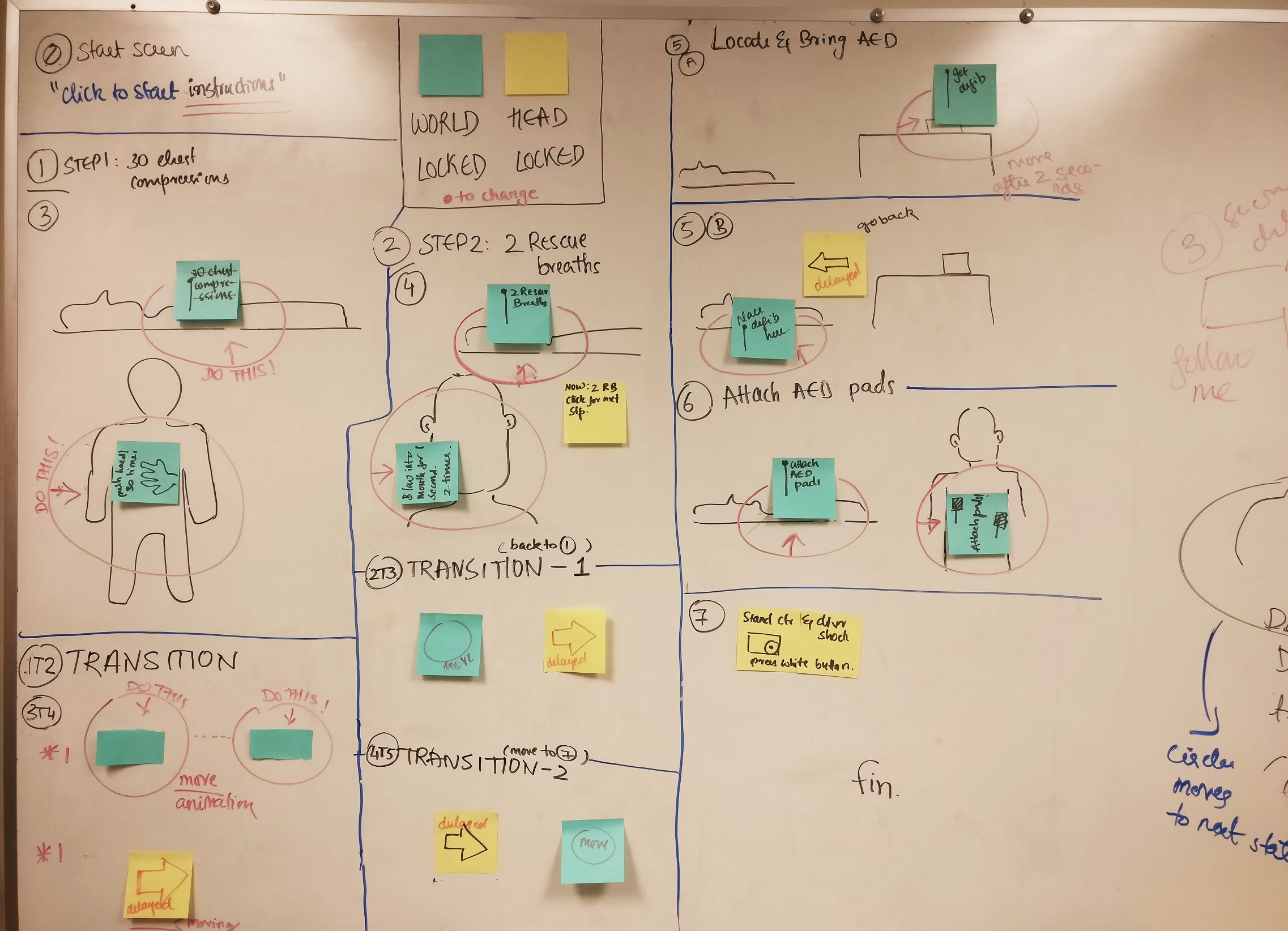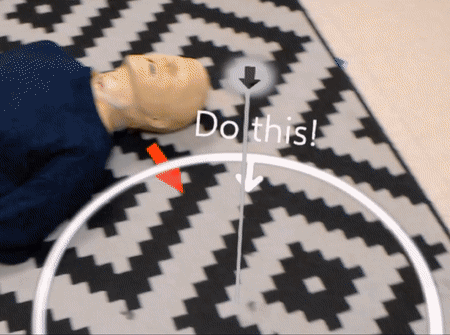HoloCPR
Designing and Evaluating a Mixed Reality Interface for Time-Critical Emergencies
As a first step in understanding the use of mixed reality for real-time resuscitation guidance, we investigate if spatially localized instructions are better than those on a 2D screen.
Performing time-critical procedures such as Cardiopulmonary Resuscitation (CPR) usually requires trained individuals on the scene. Even with aids available, most bystanders do not attempt resuscitation due to panic or fear of failing, often at the cost of the victim’s life. We propose Mixed Reality (MR) as a compelling medium to support time-critical emergencies, and study its use in this context through an iterative user-centered design process. Our research outlines a number of key considerations for the design of time-critical emergency interfaces that led to the creation of HoloCPR, an MR application providing real-time instructions for resuscitation for novices through a combination of visual and spatial cues. HoloCPR’s comparative evaluation during a realistic resuscitation scenario indicates how the use of MR can result in decreased reaction time and increased procedural accuracy.
Read more about the motivation and future of the project here.




Publications:
Janet G. Johnson, Danilo Gasques Rodrigues, Madhuri Gubbala, and Nadir Weibel. HoloCPR: Designing and Evaluating a Mixed Reality Interface for Time-Critical Emergencies. PervasiveHealth '18, New York, NY USA. [Slides]
Danilo Gasques, Janet G. Johnson, and Nadir Weibel. Real-time guidance for cardiopulmonary resuscitation in Mixed Reality. PervasiveHealth '18, New York, NY USA. (Demo)
Collaborators: